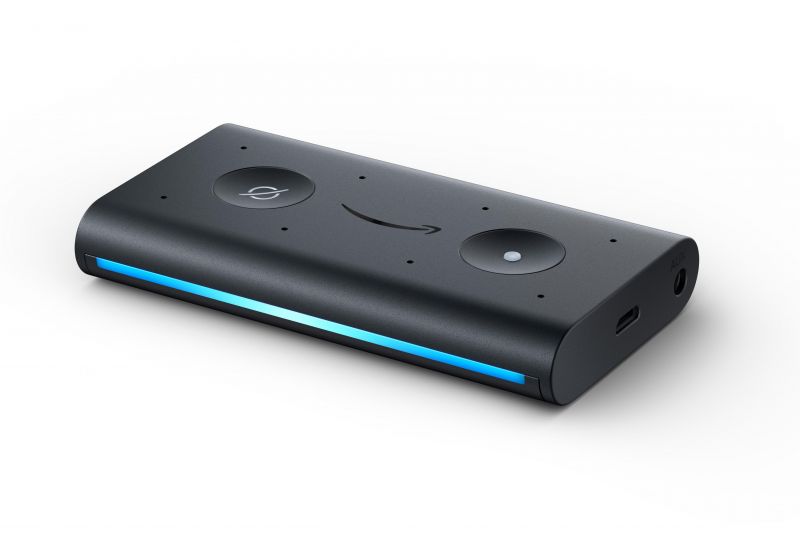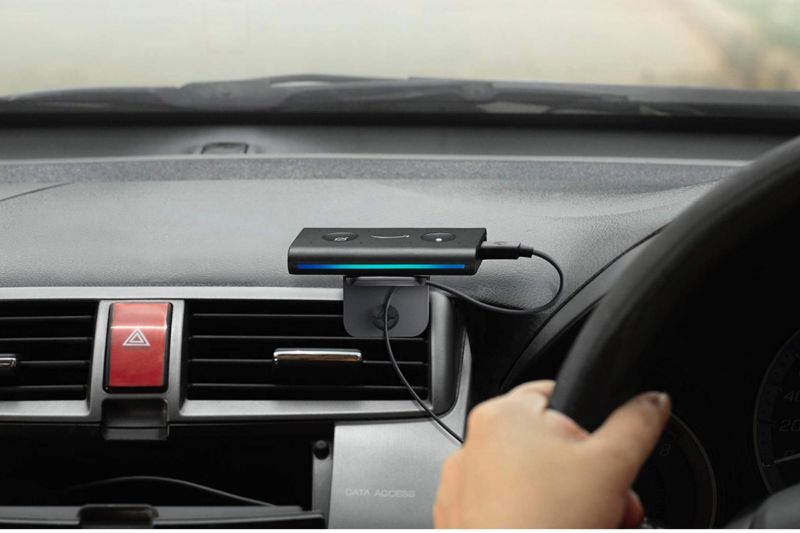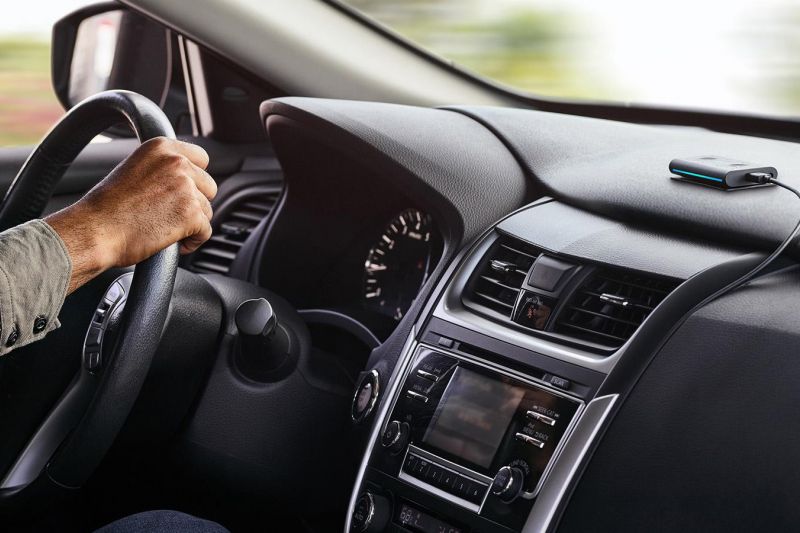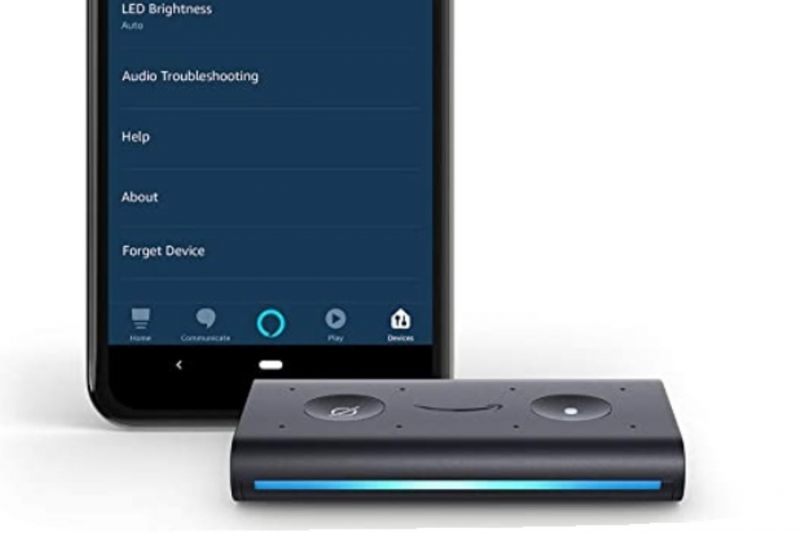Australians have been adopting smart home devices at a rapid rate. You start with a smart speaker, and a couple of connected lights, and maybe an app-controlled appliance joins the party later. The ecosystem of options is growing rapidly.
For most, the first challenge is befriending a Google or Amazon voice assistant and making sure products beyond that are supported. Until recently though, leaving home also meant leaving your voice assistant.
But with the newly-announced Amazon Echo Auto, Alexa can come with you.
The Echo Auto is slightly longer than a deck of cards and holds eight microphones, a small speaker, Bluetooth, a 3.5mm audio output, and power connection.
It can be fitted to your car with an air vent mount, or you could use some double-sided tape to stick it on the dash.
The Echo Auto connects via Bluetooth to your Android or Apple smartphone, but your phone should also be connected to your car (using Bluetooth or a cable). The Echo Auto is powered using a 12V socket, freeing up the car’s USB ports for other uses.
Echo Auto talks you through the setup process – we had it up and running in less than ten minutes as existing Amazon Alexa users, and already had the app and services connected. If this is the first Alexa-powered product you’re using, add another ten minutes to the setup process.
Alexa, now living and breathing in your car, wakes up when auxiliary power is supplied, and will connect to your smartphone automatically.
From here, commands made to Alexa will be handled using the internet connection on your phone, and responses are played through the car’s infotainment system.
Asking Alexa to play a song or artist will use your supported music service to deliver the track immediately. You can ask for a news update, random TED Talk, or podcast episode, or continue an audio book if you’re so inclined.
Anything the home Alexa can do can be matched by the in-car unit.
Some questions in the car, however, are different. Asking Alexa for directions can trigger navigation through Google Maps, Waze, or Apple Maps on your smartphone.
The Alexa app on your smartphone is location aware, meaning if you ask Alexa for a nearby coffee shop it will give you results without using other apps. The upshot is drivers can keep their eyes on the road.
You can also control your smart home on the move, turning on lights or heating before you get home – or switching them off if you forget before leaving for work.
It’s made me want to add a smart garage door opener and connected blinds to my house, both of which can be controlled from the car.
When you make use of Alexa Skills, essentially voice apps for smart speakers, you’ll become even more efficient. The Virgin Australia Skill allows you to check in for your flight while driving to the airport, while the NAB Skill can check if you were paid.
The overall experience is relatively smooth, but we did notice some moments where the Echo Auto inexplicably lost connection to the internet or phone. In a really noisy environment the Echo Auto can have trouble hearing you – we shouted ‘Alexa’ so loud other drivers showed concern at one point.
This is really the kind of device you’ll want if your infotainment system lacks voice integration or CarPlay and Android Auto – although it will play nice with smartphone mirroring. Asking Alexa to play music from Spotify would show in the Spotify app in CarPlay, likewise with navigation and phone calls.
While plenty of new cars are getting smarter and more integrated features that cater to needs like this, many of us love our car and a $79 gadget like this can make your infotainment experience feel new again.
It’s a great addition to anyone building a smart home and wanting to take it with them.







